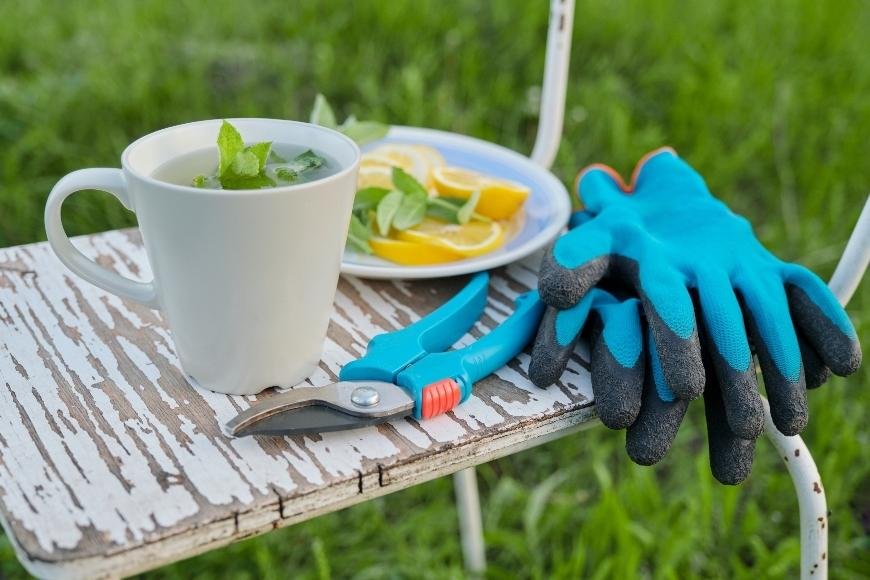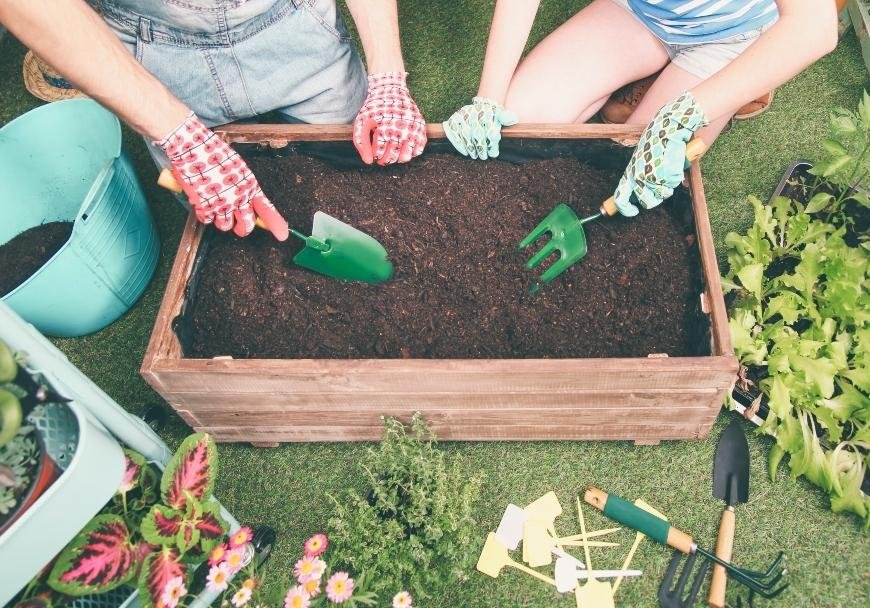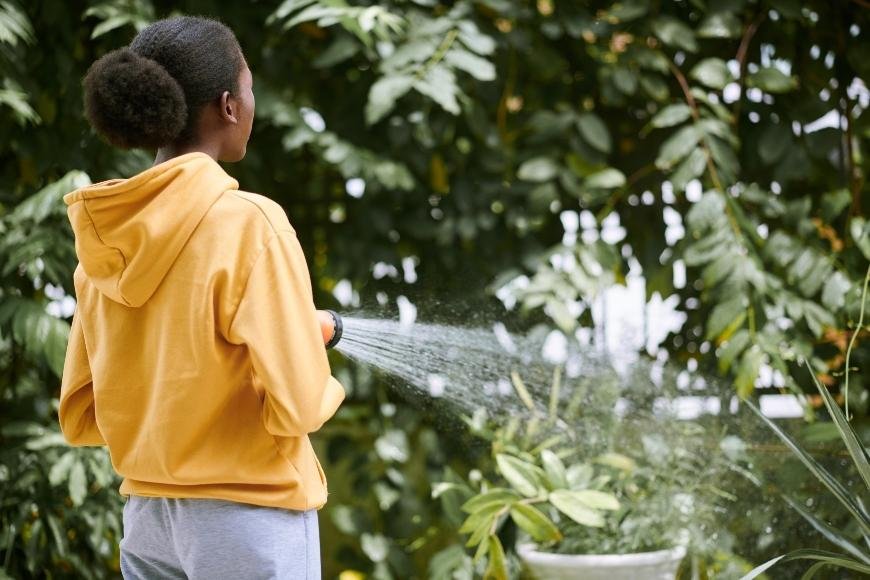How to Grow Valerian
Discover How to Grow Valerian with our comprehensive guide, perfect for young adults interested in cultivating this calming herb for its soothing properties.

To ensure a successful harvest of valerian (Valeriana officinalis), the popular herb known for its calming properties, it is important to consider various factors. To start, this guide will provide an overview of the steps and techniques needed to grow valerian successfully.
We will begin by discussing how to choose the right variety of valerian plants, including common valerian and red valerian. Next, we'll cover soil preparation tips that ensure your garden heliotrope thrives in well-draining soil with optimal nutrients.
Moving forward, you'll learn about planting and caring for your Valeriana officinalis throughout the growing seasons. This includes understanding when seeds germinate best indoors or outdoors and maintaining proper moisture levels in garden soil.
Finally, our expert advice on harvesting valerian root will help maximize its calming effects while troubleshooting common problems encountered during cultivation ensures your herb garden remains healthy and productive.
Table of Contents:
- Choosing the Right Valerian Variety
- Preparing the Soil
- Planting and Caring for Valerian
- Harvesting Valerian
- Troubleshooting Common Problems
- FAQs in Relation to How to Grow Valerian
- Conclusion
Choosing the Right Valerian Variety

Valerian is a popular herbal remedy known for its calming effects. It’s native to Europe and parts of Asia, but can be found growing in many temperate climates around the world. Different types of Valerian exist, each possessing distinct qualities and applications. Knowing which variety is right for you will help ensure that your valerian plants are healthy and productive.
Valeriana officinalis, or Common Valerian, is the most prevalent variety of valerian. This species has large leaves and produces clusters of white flowers during the summer months. Its roots have been used medicinally since ancient times due to their calming properties. Common Valerian prefers well-draining soil and full sun exposure, making it an ideal choice for herb gardens or sunny spots in your yard.
Red Valerian (Centranthus ruber) is another popular variety of valerian that’s often used as an ornamental plant due to its attractive pinkish-red flowers that bloom from spring through fall. Red Valerian grows best in partial shade with moist soil, so it’s best suited for shady areas or rock gardens where other plants won’t thrive as easily.
Sow Garden Heliotrope seeds about a quarter of an inch deep into moist garden soil at room temperature to germinate within two weeks. After the last frost date passes in your area, transplant them outside when temperatures remain consistently above freezing overnight during the growing season(s). Although its sedative effects are not as strong as those found in Common and Red Valerian varieties, Garden Heliotrope still has some medicinal properties that make it worth considering for home cultivation.
No matter which variety you choose - whether it's one already established on site or one grown from seed - proper care must still be taken when tending these valuable herbs. Make sure there is enough sunlight (or shade), keep them watered regularly and feed them organic fertilizer every few weeks if possible. With just a little bit of effort and patience, you will soon find yourself enjoying all sorts of wonderful benefits associated with having these beautiful flowering plants around, both visually and medicinally speaking.
Choosing the right Valerian variety is an important step in achieving a successful harvest. With proper preparation, your soil will be ready to nurture and sustain these beautiful plants.
Preparing the Soil
Growing Valerian is a great way to get the calming effects of this herb. It's important to prepare the soil properly before planting, so that your plants will thrive and produce seedlings. The best type of soil for growing Valerian is well-draining garden soil with some organic matter mixed in, such as compost or aged manure. To ensure adequate moisture and nutrient availability, add organic matter such as compost or aged manure to the soil. If you're starting seeds indoors, make sure they have plenty of light and warmth while they germinate. Once they've sprouted, it's time to move them outdoors into your herb garden or flower bed.
When transplanting seedlings outdoors, dig a hole twice as wide as their root ball and add some compost or aged manure if needed before gently placing them in the ground at least 6 inches apart from one another. Water regularly during dry periods throughout their growth cycle until harvest time arrives.
Once the soil is prepared, it's time to plant and care for Valerian. To ensure a healthy crop of this versatile herb, it's important to understand how best to plant and maintain your plants.
Planting and Caring for Valerian

Valerian is an herb with soothing characteristics that can be employed to craft a tranquil atmosphere in your garden. Planting and caring for Valerian is not difficult, but it does require some knowledge of the best growing conditions. Here are some pointers for cultivating Valerian in your own herb garden.
When planting Valerian, you should use well-draining soil and plant during one of the two growing seasons – spring or fall. For optimal growth, choose a sunny spot with at least six hours of direct sunlight each day. If planting from seedlings, make sure they’re spaced at least 12 inches apart to give them enough room to grow properly. Scatter seeds indoors or in the ground, then cover lightly with soil and keep moist until sprouting takes place (usually within 10 days).
Once planted, water regularly so that the soil stays moist but not soggy; if necessary add mulch around plants to help retain moisture levels throughout dry spells. Fertilize every other month using organic compost or manure tea as this will provide essential nutrients for healthy growth while avoiding chemical fertilizers which can damage delicate root systems over time. Prune back any dead stems or leaves after flowering season ends in late summer/early autumn for better air circulation and improved light exposure throughout winter months when plants may become dormant due to cold temperatures or lack of rainwater/snowfall etc Additionally remove any weeds that appear near valerians as these can compete for resources like sunlight & water needed by your herbs thus leading to stunted growth rates & decreased yields come harvest time.
Properly planting and caring for Valerian can ensure a successful harvest. With the right knowledge, you are now ready to move on to harvesting your Valerian crop.
Harvesting Valerian
Gleaning Valerian is a necessity for guaranteeing optimal yields from the crop. The right variety, soil preparation and harvesting techniques are essential for success.
As the flowering season approaches, closely monitor your Valerian flower buds for any signs of browning, as this indicates that it is time to dig up and store the roots. Using a spade fork, carefully remove them from the garden heliotrope bedding soil mix; harvesting too late could result in a loss of potency due to its active compounds breaking down over time. To ensure maximum potency, store your harvested roots away from direct sunlight in a dark and cool place such as a basement or pantry - cover with burlap sack for added protection. Monitor the signs carefully to make sure you can take full advantage of your efforts.
Harvested Valerian can also be dried using various methods such as hanging bunches upside down out of direct sunlight until leaves turn crispy dry or by using a food dehydrator machine set at temperatures between 95F-115F degrees Fahrenheit. Leave overnight and check progress the next morning, continuing the drying process until a crunchy, brittle consistency is achieved. Finally, store small batches in tightly sealed airtight containers away from heat sources - preferably glass jars - labeled with the date stored. Shelf life usually lasts 6-12 months after the drying process is complete; enjoy all natural calming effects without worrying about losing potency.
Gathering Valerian is a critical action in the growing procedure, requiring close watch to guarantee it's completed accurately. With this knowledge under your belt, let's now look at some of the common problems you may encounter when growing valerian and how to troubleshoot them.
Troubleshooting Common Problems
Valerian is a popular herb to grow, but it can be tricky. Common problems may arise when growing Valerian, such as disease or pests. Knowing how to troubleshoot these issues can help you have a successful harvest of this calming root.
When planting valeriana officinalis, choose the right variety for your climate and soil type. Red valerian produces more seedlings than common valerian, so if you’re looking for a larger crop it might be best to go with red over common varieties. Sow the seeds indoors in the early spring for germination prior to summer's heat, and transplant them into a sunny bed with good drainage by late spring or early summer.
Once your plants are established in their new home make sure that you keep up with regular watering and weeding during their growing seasons; keeping the soil moist but not overly saturated will ensure optimal growth while also preventing diseases from setting in due to waterlogged roots or leaves. Pests like aphids or slugs can also cause damage; check your plants regularly and use natural methods like companion planting with garlic chives or garden heliotrope around the perimeter of your beds as preventative measures against infestations.
Once harvested, dry out each root thoroughly before storing away for future use. Doing so will ensure that the calming effects of Valerian are at their strongest when ready to be used in the future.
FAQs in Relation to How to Grow Valerian
What is the best way to grow valerian?
Valerian is best grown in full sun or partial shade and moist, well-drained soil. It requires regular watering and fertilization to ensure healthy growth. For optimal results, dig a hole twice the size of the root ball before planting your valerian plant. Make sure to loosen up any compacted soil around the roots for better drainage. Once planted, water regularly until established and then reduce watering frequency as needed during dry periods. Fertilize at intervals with a complete fertilizer containing nitrogen, phosphorus, potassium, calcium and magnesium for optimal results.
Can I grow valerian at home?
Yes, you can grow valerian at home. Valerian is a widely-distributed flowering plant that can be easily cultivated both indoors and outdoors, requiring nutrient-rich soil with good drainage and adequate sunlight (or partial shade). It prefers rich soil with good drainage and plenty of sunlight, but it will tolerate some shade. When grown from seed, it takes about four months for the plant to reach maturity; when propagated through cuttings, it may take as little as two weeks before new growth appears. With proper care and attention, you can enjoy homegrown valerian all year round.
Is it hard to grow valerian?
Growing valerian can be a difficult task for inexperienced growers. It requires consistent temperatures and adequate light, as well as careful watering to ensure the plant does not become over-watered or too dry. Valerian also needs regular fertilizing with high nitrogen fertilizer in order to promote healthy growth. With patience and care, however, it is possible to successfully grow this herb indoors or outdoors.
Is valerian easy to grow from seed?
Yes, it is possible to grow valerian from seed. Valerian seeds are easily obtainable and can be planted in any soil type, needing only minimal attention during the germination process before sprouting. They require minimal care and attention during the germination process, although they may take several weeks before sprouting. Once established, valerian plants need regular watering and fertilizing for optimal growth but will otherwise thrive with little effort.
Conclusion
Grow valerian with confidence knowing that you have the knowledge and resources to properly care for this plant. With a bit of patience, time, and effort you can successfully grow your own supply of Valerian root at home. Properly caring for it will ensure an abundant harvest which can be used in many ways including as a natural sleep aid or herbal remedy.


































































































































